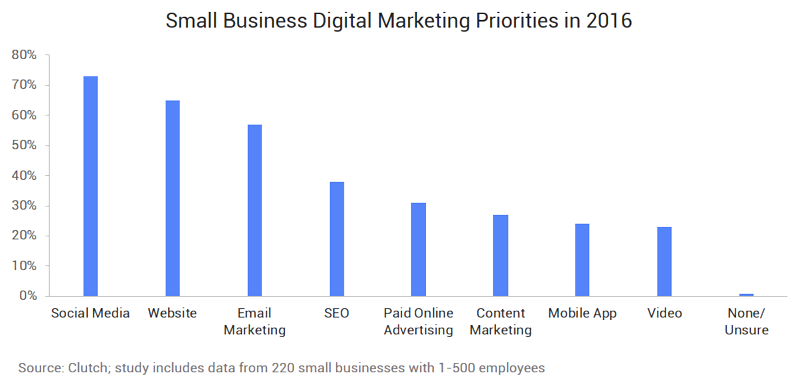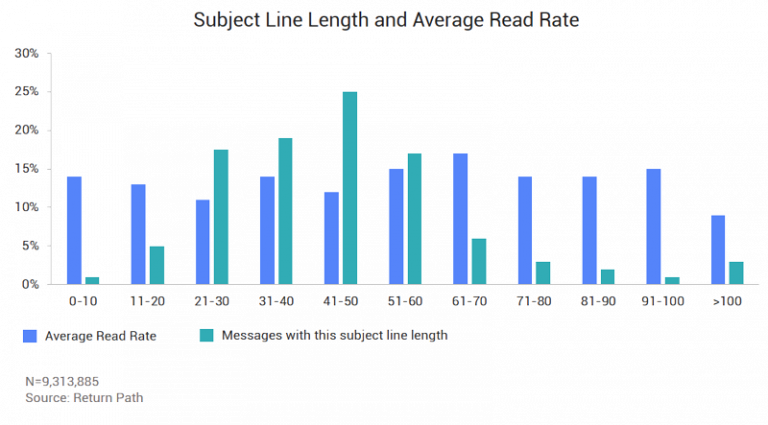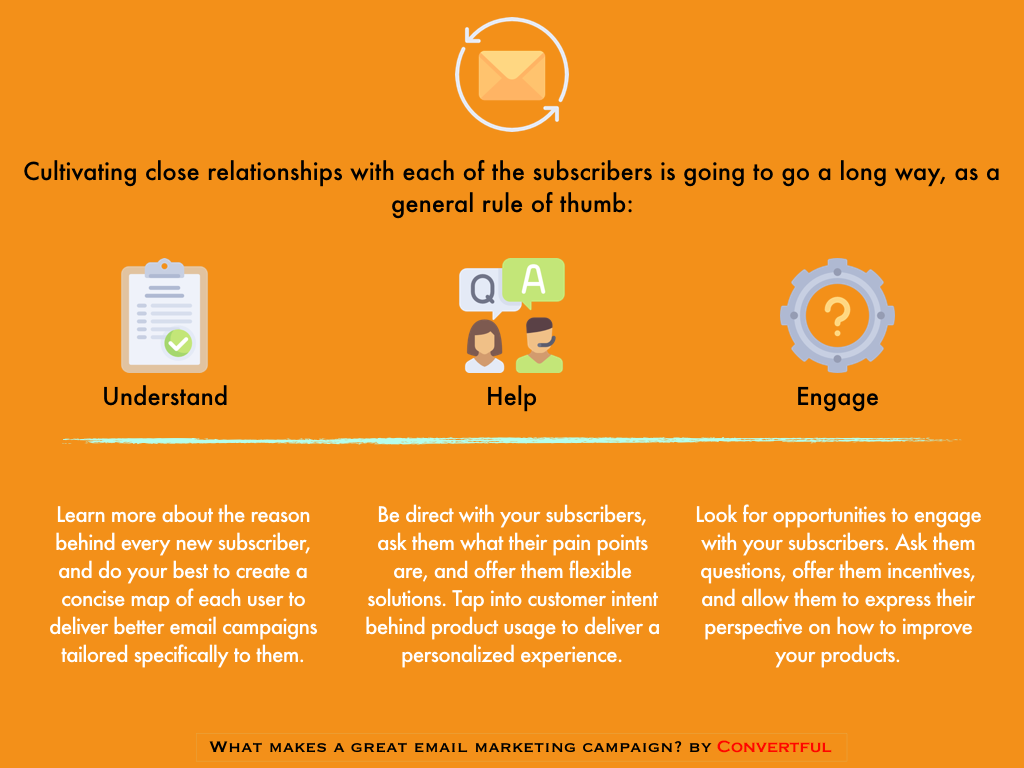Basics
As a small business, one of your top priorities is the management of your email list so it doesn’t go stale too quickly.
Over the years, email marketing has become one of the most favored lead generation channels amongst professional marketers. It pays for a business to investigate and understand the different principles of a successful email marketing campaign.

Ideally, you want to make the most out of every person who signed up for your list. In this post we will depict the strategies that you can use to keep your email list engaged and satisfied.

First of, in what state is your email list currently? Are you regularly getting new signups and getting those signups to convert? Are you facing difficulties with keeping your subscribers engaged? Have to deal with a large number of people who unsubscribe from the list?
Why do people unsubscribe from your list?
- They’re genuinely no longer interested to be a part of the list.
- They have changed their email address.
- They’re not aroused by the quality of your content anymore.
For the first two reasons, there’s not much that you can do. However, if users start to unsubscribe because of low-quality content, you need to act. Start re-evaluating whether your email campaigns live up to the users’ initial expectations.
When someone new signs up for your newsletter, it’s usually a clear indication of — “Hey, your content is great, and I would love to have more of it in my inbox, here is my email address, please keep sending me the good stuff!”.
To better understand why people signup to your list, it’s useful to segment your forms. Create different categories:
- Content pages — these subscribers will signup with forms in your blog and other informative pages. Make sure you’re segmenting them into the list of ‘Content’ so that you can send appropriate content.
- Free stuff — if you offer free materials in exchange for an email, keep these separate from your other lists. Then gradually work to onboard them as customers. This works for eBooks, case studies, whitepapers, etc.
- Trial users — if you have a trial version of your product, separate these email addresses from your other lists. Then work with converting these users separately.
This concept applies to any major part of your website where you plan to get new subscribers. Grouping them will make it easier for you to send out email campaigns that are engaging. They will be relevant to how the user understands your brand up until then.
Successful Email Campaign — 5 Aspects
Study and analyze email campaign reports, read the success stories of other companies. This way you can pinpoint the parts of an email campaign to optimize for better engagement rates.
Revisit the strategic plan behind your campaign if it reports a high bounce rate. Users add themselves to the list because of self-interest. High bounce rate indicates that content is not satisfying enough for them.
Before hitting the Send button next time, ask yourself a couple of questions. What is the goal of this particular campaign? Do the contents of this email reflect that goal?
1. Goals — the most successful email campaigns orient around goals. Goals and a strategic plan for their achievement. Are you trying to convert subscribers into customers? You want them to perform some action? It could be as simple as getting subscribers to read an article you just published. What matters the most is the way that you tailor your campaigns. They should effortlessly reflect goals.
2. Design — plain-text emails might work for immediate news updates. Don’t limit yourself with it. All modern browsers and mobile devices support modern design standards. Use A/B testing for styles of email campaigns to analyze which design works best with your audience. Anyways, most of the email marketing platforms provide a plain-text view of the email.
3. Personalization — personalized context allows the person to feel more in control of the received offer. Psychology studies done on the subject of personalization tell us that. Person’s name and relation history makes the context familiar, and in turn relevant.
4. Segmentation — in email marketing, means dividing your existing email list into specific groups. Current customers, potential customers, premium customers, or members interested in content offers. By segmenting your list you can deliver a more specific and meaningful campaign.
5. Value — consumers love to receive things for free, then again — who doesn’t? Consider giving your subscribers a freebie once in a while. It can drastically increase the open and click-through rates of your campaigns. Bluewire Media saw their clickthrough rate skyrocket to 35% just by sharing an editorial template. It was a part of the campaign specifically designed for lead nurturing. Giving subscribers value is a sure-fire way to increase engagement and retention.
How to keep your subscribers engaged?
All the mentioned points will not go unnoticed once you carefully implement them. Needless to say that they’re a vital part of any email marketing campaign, especially when you’re encouraging users to take a specific action or purchase a product. It’s very important to put in the hours of work to come up with a solid campaign framework which will encompass all the points at once.
#1: Use shorter, more concise subject lines
The length of subject lines matters. There is great research behind the different email subject lines and their performance. Return Path found that,
- Most subject lines were between 41 and 50 characters.
- Subject lines 61 – 70 characters long had the highest read rate (17%).

Use the email campaign headline to provide a clear explanation of what the user will find inside. Apart from headline length, it is important to use clear and actionable language.
Using words like ‘daily’ and ‘weekly’ can help to boost open rates while using ‘monthly’ can slow them down. This is to do with the fact that users like to stay updated as frequently as possible. ‘Monthly’ indicates that it might take a long time to read the latest news and announcements.
Similar statistics show that words like ‘Free’ and ‘Tomorrow’ in the email subject line can boost engagement by up to 10%.
Note, that email agents will filter certain words and phrases or classify them as low-quality, as reported by Automational. The only way around this is to gain the trust of the particular email agent and work towards providing a professional email experience.
The best email subject line is going to be one that’s honest, straight to the point, and not overly creative. Users prefer to understand what’s in the email before they open it. Your subject lines should reflect the content without having the user think twice.
#2: Use feedback as a form of engagement
There’s nothing more satisfying when a business asks their customers for feedback. What they think about services, and what to improve to make it better.
This approach is beneficial in many ways. First, it helps you to understand how customers are using your product. Second, it provides you the customers’ expectations about the features in future. Also, it gives you a chance to engage each customer individually. You can learn about their experience with your product and support that you provide.
You can use surveys to find out more about an individuals or to discover if there is an issue with a larger set of users. A common trend amongst email marketing practices is to offer incentives upon the completion of a survey. For example 15% off of the next purchase.
#3: Re-segment low-ratio subscribers and offer an incentive
You can use tools of your email marketing platform to segment your list. Find subscribers who haven’t opened or engaged with any of your email campaigns over a period of 3 to 6 months.
You can captivate their attention once more. Create specific campaigns that would offer a reminder on why they signed up in the first place. Also, use a rundown of what new has happened in your business over that period of time.
Don’t just tell your subscribers to ‘purchase our product at a discount price.’ Offer them a valuable insight and data as to how your products have helped others over that period of time. Show them how they can learn to use your products in the same way.
#4: Create custom Calls to Action
Your ultimate goal is to get your subscribers to perform an action within an email campaign. Actions encourage click-through rates lead to new customers. Provides you a data about the way that users are interpreting your product.
As shown in the above image, Expedia uses a direct method for giving customers an incentive. It is a coupon and a simple CTA button for revealing the coupon code, which then takes the user to the main website.
Did you know that the support period for the items below is expiring in the next couple of weeks?
Having valid support gives you peace of mind by ensuring the author you purchased from is available if you have any questions or issues with your ThemeForest/CodeCanyon items. By extending support for the below items before they expire, you’ll save $10.50 off the regular support price.
Using this approach is a great example. This is how you can use existing customer data to tailor specific email campaigns that promote incentives.
It’s not just about ‘Buy Now’ or ‘Save Today’. It is a creative way in which you can compliment your existing relationship with a customer. The way to ensure that it is mutually beneficial.

Closing words
At the end of the day, an email marketing list is not so different from a shopping store. Every customer counts and it is the interaction with those customers that make all of the difference.
![10 Types of Digital Marketing [with Examples]](https://convertful.com/wp-content/uploads/2019/03/types-digital-marketing_136db1be596b5712e0570f045c1585b0_2000.jpg) 10 Types of Digital Marketing [with Examples]
10 Types of Digital Marketing [with Examples] Collecting Email Addresses on Your Website – The Guide
Collecting Email Addresses on Your Website – The Guide